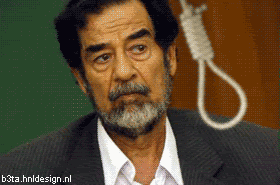SEPTA Giving South Philly Gas Pains?
Return of trackless trolleys bypasses South Phila.
The Northeast already has 17 of the new 38. But SEPTA, favoring buses, calls restoring them elsewhere impractical.
By Paul Nussbaum
Inquirer Staff Writer
The trackless trolleys are back.The Northeast already has 17 of the new 38. But SEPTA, favoring buses, calls restoring them elsewhere impractical.
By Paul Nussbaum
Inquirer Staff Writer
But not in South Philadelphia.
Five years after SEPTA's board voted to suspend all trackless trolley service for one year, the first of 38 new electric trolleys are gliding through the streets of Northeast Philadelphia. Their return revives an 85-year-old transportation tradition in the city.
Quiet and clean and with a new ability to maneuver "off wire," the trackless trolleys have another advantage over buses these days: With the cost of diesel fuel skyrocketing, they're cheaper to run.
Trackless trolleys cost $2.54 per mile to operate and maintain, compared with $2.76 for diesel buses, according to SEPTA.
Nonetheless, SEPTA has stuck to its 2006 decision - made over Philadelphia's objections - not to buy 23 more trackless trolleys to restore service in South Philadelphia. SEPTA managers say they prefer buses, which are cheaper to buy and more flexible to run.
"For an authority of this size, which has about 1,300 buses, the capital costs and upkeep costs for a small fleet of trolleys - it simply isn't practical," SEPTA spokesman Richard Maloney said. And he said the cost of electricity, capped until 2010, could rise after that and increase trolley expenses.
So the "temporary" removal of trackless trolleys from South Philadelphia seems more permanent than ever. So does the "temporary" elimination of tracked trolleys 16 years ago from Route 23 (Chestnut Hill to South Philadelphia) even though the Pennsylvania Department of Transportation is installing new trolley tracks and overhead wires as part of its $17 million reconstruction of Germantown Avenue.
While electric trolleys grow increasingly popular in such cities as Seattle, San Francisco, Boston and Toronto, SEPTA's decision rankles city and environmental leaders here.
"With fuel costs where they are, we think it would be worthwhile for SEPTA to revisit its position," said Stephen Buckley, director of policy and planning in Mayor Nutter's Office of Transportation and Utilities. He said the mayor's people would meet with SEPTA officials this week about the trolleys.
"It was a good idea back then [2006], and it's an even better idea now," said Joseph Minott, executive director of the Clean Air Council. "Environmentally, it's a lot more efficient to get your energy from a central power plant than from diesel engines in every bus. It's cleaner - there are no emissions in the community. They tend to be very quiet. . . . And with fuel costs what they are, it makes more sense than ever.
"SEPTA should move forward to renegotiate for the purchase of those vehicles."
When SEPTA's board voted in 2003 to sideline trackless trolleys for a year, the agency was paying $12.8 million a year for diesel. For the new fiscal year that starts July 1, it is budgeting $57.1 million for fuel.
"Trolleys are a win-win," said Susan Patrone of the Passyunk Square Civic Association in South Philadelphia. "And the infrastructure is there. The lines are still there, the poles are still there, but they're being allowed to deteriorate."
In 2006, SEPTA agreed to buy the 38 trolleys for Northeast Philadelphia for $43.5 million (including $34.8 million in federal funding). If it didn't, it might have had to refund millions spent by the Federal Transit Administration to update overhead power wires and build a new trolley garage.
But with its perennial budget shortfalls, SEPTA's board voted against spending $20 million for 23 trolleys for South Philadelphia.
The new trolleys are expected to be on the streets by midsummer on Routes 59, 66 and 75. So far, 17 have arrived.
A recent ride on one of the Route 59 trolleys was a quiet, smooth trip from the Margaret-Orthodox Station to Bells Corner. The loudest noise was the ventilation system.
Operator Gerald Schneider said passengers sometimes complained that the vehicle had broken down because they didn't hear engine noise.
To maneuver around construction projects or accidents, the trolleys have diesel-powered generators that can provide electricity when the trolley arms aren't in contact with the overhead wires.
And a "regenerative braking" system returns electricity to the power lines when the trolley brakes.
Trolleys, which cost more than twice as much to buy as buses (about $1 million vs. $400,000), last 50 percent longer - 18 years rather than 12.
Other transit systems with trackless trolleys are more enthusiastic about them than SEPTA has been.
In Seattle, "whenever there is talk about putting buses on trolley routes, people start to reach for their guns," said Jim Boon, manager of fleet maintenance for King County Metro.
The agency has 159 trackless trolleys in a fleet that includes 1,300 buses, and Boon said the agency was "committed to trolleys. They're 100 percent green. There's no thought about replacing the trolleys."
The Massachusetts Bay Transportation Authority introduced 28 trackless trolleys in Boston four years ago, and runs 32 "dual mode" trackless trolleys that operate off-wire with diesel generators for part of their routes. The agency has 1,040 buses.
"The MBTA has been pleased with the performance" of the trolleys, spokesman Joe Pesaturo said.
With buses, SEPTA officials said, routes can be altered without the need for overhead wires, and detours are no problem.
SEPTA is building its future on electric-diesel buses designed to use 25 percent less diesel and create less pollution than the buses they will replace. SEPTA has 32 in service now and estimates the operation and maintenance cost at $2.60 per mile.
SEPTA is spending $212.4 million to buy 400 of the hybrid buses over the next four years. The hybrids cost about $160,000 more than a standard bus, an amount SEPTA hopes to largely recover in reduced fuel and maintenance costs. The first of the new hybrids is to arrive by August.
Labels: Philliness


























0 Comments:
Post a Comment
<< Home